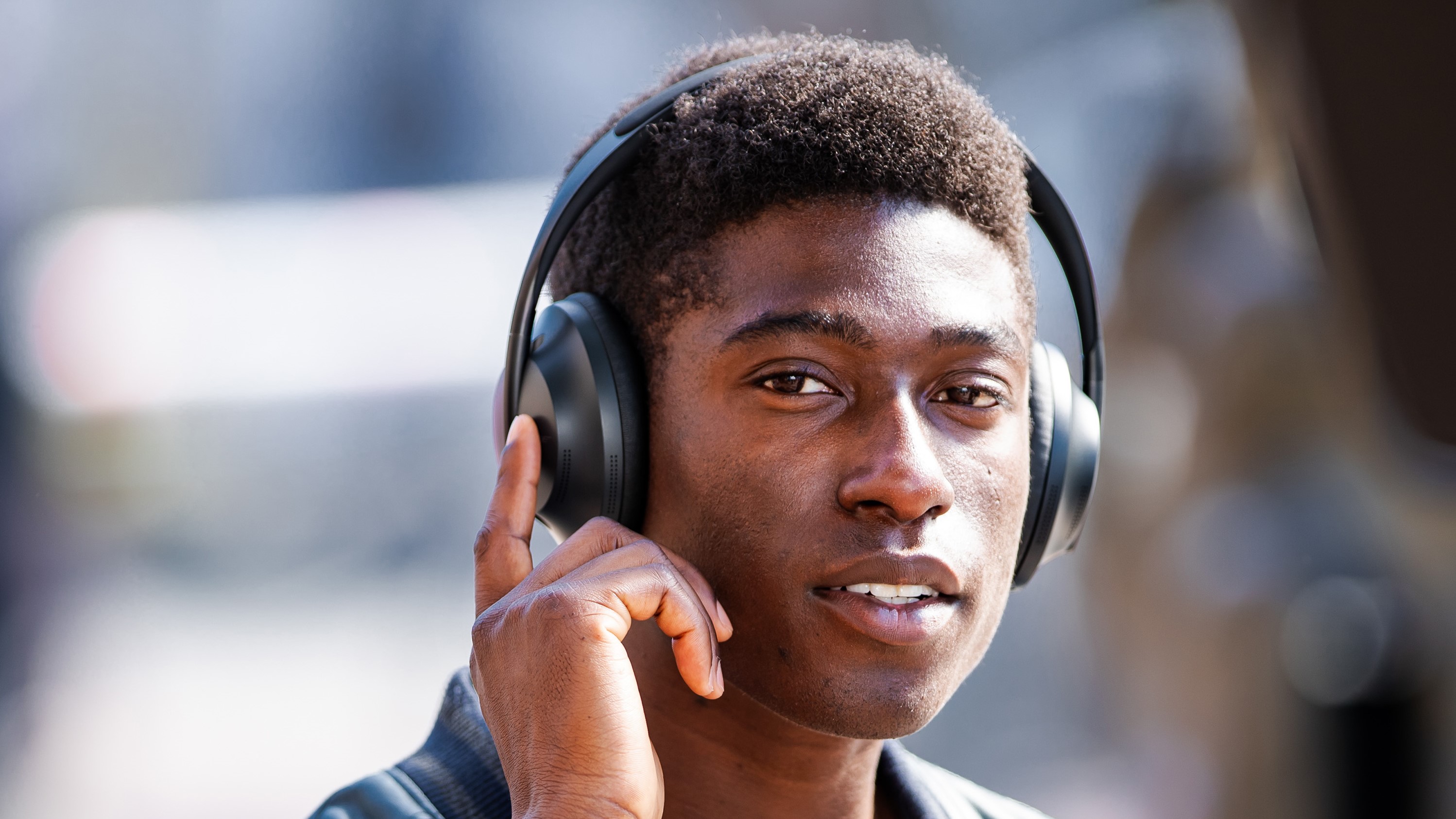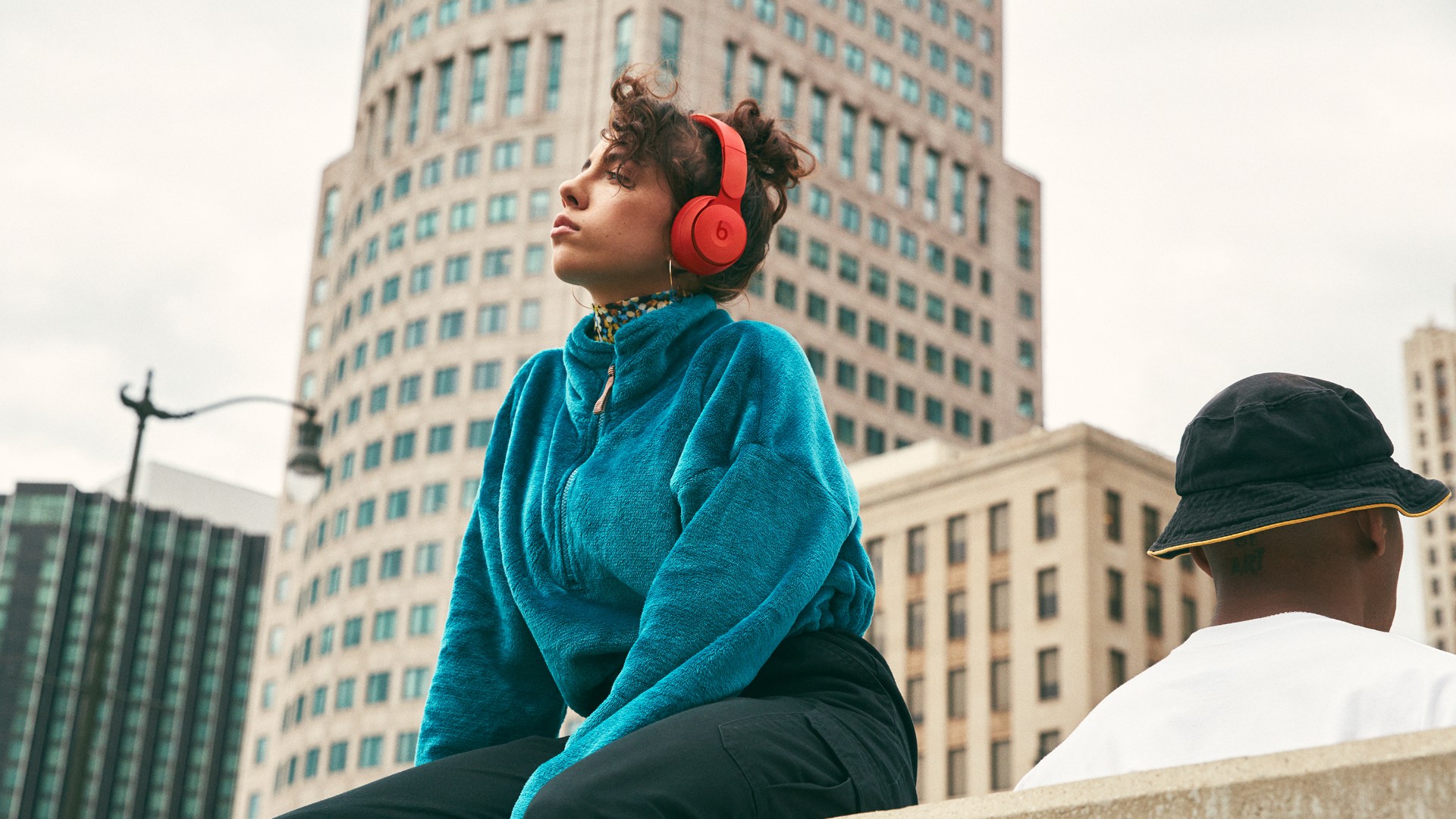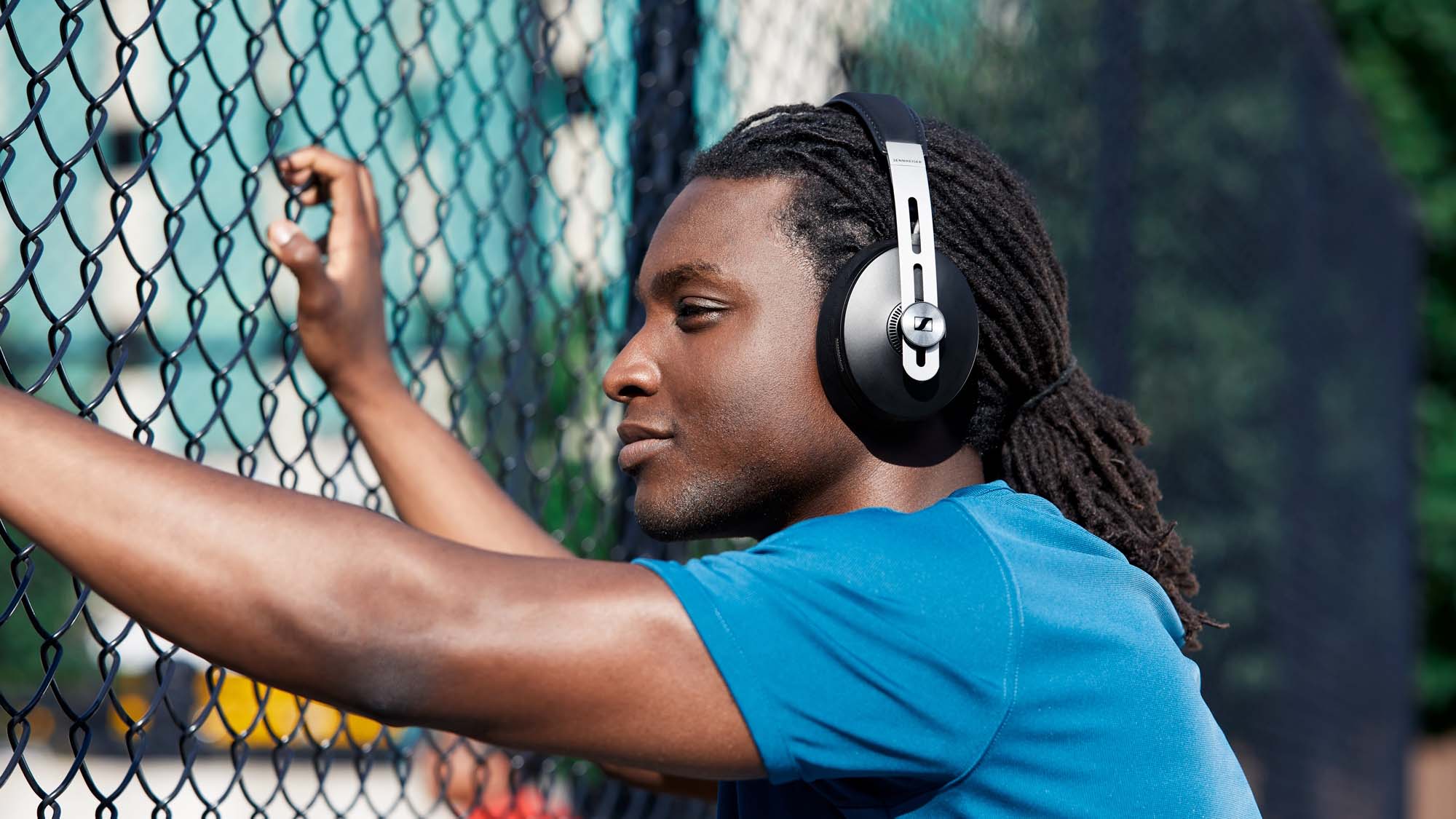The best headphones of 2020 vary wildly in terms of style, price, and specs, from compact true wireless earbuds such as the AirPods Pro to class-leading, noise-cancelling over-ears such as Sony’s WH-1000XM4.
It’s possible for everyone to find their perfect pair of headphones, but figuring out which model to opt for can prove tricky. This is especially true when huge sales events such as Amazon Prime Day and Black Friday are on the horizon; both may present great times to buy a set of headphones, but all those deals and discounts can make coming to a decision even harder.
This is the reason we’ve put together this handy buying guide to choosing the best headphones for you, covering everything from the best brands on the market to all the features and specs you should be looking out for.
That way, when the deals start to hit thick and fast, you’ll be well equipped to decide upon the best headphones for you – and hopefully, you’ll be able to save some money along the way.
Headphones: the different styles explained
One of the biggest decisions you’ll need to make is which style of headphones (also known as ‘form factor’) you need. Below, we take you through all the variations and their positives and negatives.

Over-ear headphones
Picture a pair of headphones in your mind, and the over-ear form factor is likely to be the first that comes to mind. Consisting of large earcups that sit – you’ve guessed it – over your ears, they’re connected by a headband, which is usually padded and adjustable for comfort.
Which headphones style is best for you?
Check out TechRadar's exhaustive guides to the best headphones you can buy today:
Over-ear headphones generally offer superior audio quality over all the styles available, as their large housings can hold bigger, more powerful drivers than in-ear models. The best over-ear headphones usually present wider soundstages than their in-ear counterparts, resulting in a more ‘natural sound’, leaving plenty of room for the different instruments in your music to shine. Those large drivers also tend to displace more air than the compact drivers found in in-ear headphones, creating a strong bass response, with thumping low frequencies.
For headphones that block out annoying environmental noise, over-ear headphones are a great option; even if they don’t come with active noise cancellation technology, their heavily padded earcups are pretty good at preventing outside sounds from reaching your ears (this is known as passive noise cancellation).
If safeguarding your hearing is important to you, then again, over-ears should be considered over in-ear headphones models, since they put a bit more distance between those loud tracks and your eardrums.
For headphones that you can wear out and about, look for closed-back models. This type of headphone halts any air passing through the earcups, allowing for better sound isolation and passive noise cancellation; it prevents sound leakage, too. However, while your music won’t disturb anyone around you, closed-back headphones can create a ‘closed-off’ sound and an uncomfortable feeling of pressure during long listening sessions.
Audiophiles who want to do lots of analytical listening at home or in a studio should opt for open-back headphones. These models do allow air to pass through tiny holes in the earcups, which prevents the build up of pressure and therefore the distortion of sound. Open-back headphones cans typically sound more natural and expansive, but will leak a lot of audio, so aren’t suitable for listening in public places.
- The best over-ear headphones of 2020

On-ear headphones
On-ear headphones (also called supra-aural headphones) represent a middle-ground option between bulky over-ear headphones and compact earbuds. As you can probably guess from the name, on-ear headphones have ear cushions that sit on, rather than around, your ears, which some people find more comfortable to wear for long periods of time.
Usually smaller in size than over-ear models, on-ear headphones are great for use while commuting. Some of these headphones offer noise cancellation, too – although they won’t offer the same level of passive noise cancellation.
On-ear headphones also come in open- and closed-back designs; which you opt for will depend on where you’ll be using them and whether you’re listening for fun or using them for intensive, analytic listening.
- The best on-ear headphones of 2020

In-ear headphones
In-ear headphones – also known as earbuds or earphones – are small headphones that sit either in the inner-ear (such as the AirPods), or further along in the ear canal (such as the AirPods Pro), thanks to silicone or memory foam eartips that mold to your ear shape.
These diminutive earbuds are the most easily portable of all headphones, and are therefore suited to traveling and use during exercise. However, their smaller drivers mean that they usually can’t match over-ear headphones in terms of audio fidelity and power.
Saying that, earbuds are getting better all the time, and nowadays some models even come with active noise cancellation technology to rival the best over-ear headphones. Plus, innovations in Bluetooth technology have given rise to different wireless form factors: wired earbuds, wireless earbuds, and true wireless earbuds, for example.
- The best in-ear headphones of 2020
Wireless headphones: everything you need to know
Wireless headphones comprise the following styles: wireless earphones connected via a neckband; wireless on-ear headphones; and wireless over-ear headphones. All are battery-powered and use Bluetooth to connect to your smartphone, laptop, portable music player, or even your turntable.
Wireless over-ear and on-ear models simply lose the wire connecting them to your device – otherwise, they look pretty much the same as your regular pair of wired cans, and give you the noise-isolating prowess of over-ears without the need for cumbersome wires to connect to your device.
Wireless in-ear models, earphones, or earbuds (depending on your preferred vernacular), have a neckband connecting each earbud, making them ideal for runners who want the freedom of a wireless connection with the security of a wire keeping their earbuds firmly around their neck.
True wireless earbuds have no cord whatsoever; no wires to get caught in your zipper, and nothing to keep each bud connected to the other. For some, this means true freedom; for others, untethered true wireless means constant danger of losing their expensive audio kit down the drain.
- The best wireless earbuds you can buy today

Should I buy wireless headphones?
There was a time when would have dissuaded you from buying wireless headphones of any kind, because audio compression over Bluetooth connections led to poor sound quality.
However, wireless headphones have come a long way. Nowadays, the difference compared to using wired cans is hardly discernible to all but the most critical listeners.
Even true wireless earbuds, which have no wire at all, can sound excellent – and the lack of any cabling means that all forms of wireless headphones are convenient and well-suited for use on the go.
However, there are instances where we’d recommend using wired headphones, including for analytical listening and times when you can’t rely on the built-in battery life of your cans to get you through the day.
- The best wireless headphones of 2020
How much should I spend on a pair of headphones?
That really depends on what you’re looking for. If you want a pair of best-in-class noise-cancelling headphones, such as the Sony WH-1000XM4, you can expect to spend upwards of $300 / £300 / AU$350, but cheap over-ear headphones can be found for less than $100 / £100 / AU$150.
Audiophile headphones can be more expensive still, although brands such as Sennheiser offer analytical cans for less.
Similarly, the best true wireless earbuds – the AirPods Pro, for example – usually sit around the $250 / £250 / AU$400 mark, but you can find budget in-ears for cheaper, with some models costing less than $50 / £50.
As is true with most things, in general you get what you pay for. As such, the more you spend, the more highly specced you can expect your headphones to be. Saying that, the best headphones of 2020 offer a combination of great design, fantastic sound, and extra features such as noise cancellation at prices we’d consider to be good value for money. Our advice is to shop around, be clear on the features you want your new headphones to include, and check out TechRadar’s extensive back catalogue of headphone reviews to make sure your intended purchase is a good investment.
- The top cheap headphone deals this month

What features should I be looking out for?
Noise cancellation – This tech blocks out environmental sound. Active noise cancellation (ANC), which uses digital signal processing, is usually more desirable than passive noise cancellation, which simply relies on the padding on the earcups to block sound. Headphones that only use the latter aren’t normally referred to as ‘noise-cancelling’.
Water resistance – If you need waterproof headphones, look for an IP rating of IPX4 or above. Waterproof headphones are usually suited for use when participating in sporting activity and can withstand sweat and rain. Some headphones are even suitable for wear whilst swimming (IPX8).
Drivers – Look for the type and size of the drivers (speakers) used within the headphones. Larger driver sizes – 40mm upwards – are found in over-ear headphones, while you’re usually looking at around 6mm for earbuds. The larger the driver, the more air is displaced as they vibrate, and the more powerful the sound. Dynamic and pistonic drivers are particularly good at this, so if sonic power is your main concern then look for headphones that contain these drivers.
Weight (and general design) – Style is an important consideration when it comes to headphones. Do you prefer the minimalist look of the Sony WH-1000XM4 or the iconic design of the Apple AirPods? Perhaps you’re looking for more colorful headphones such as the Beats Solo Pro or the Urbanista London. The weight should also be taken into account, especially for sports-focused earbuds where lighter is better. With sports/running earbuds, a secure fit is essential, too – design features such as wing tips, differently sized eartips, and ear hooks are desirable.
Battery life – This is important for any wireless headphones. For over-ears, you should be looking for 20 hours at a minimum. Around 8 hours is decent for neckband-style earbuds, and for true wireless earbuds, anything above 5 hours onboard and 20 hours in the charging case is desirable – although some models such as the Lypertek Tevi far exceed this.
Connectivity – Wireless headphones come with Bluetooth 4.2 or above – anything less is quite dated now, with Bluetooth 5 and above being the gold standard of wireless connectivity. Extra features to look out for include aptX HD, aptX Adaptive, aptX Low Latency, and any support for Hi-Res Audio codecs (AAC, FLAC, and so on) or virtual surround sound codecs such as Dolby Atmos/Sony 360.
How can I find the best headphone deals on Amazon Prime Day?
Amazon Prime Day takes place on October 13-14 (although early sales kicked off on September 28), and we’re expecting to see lots of fantastic headphone deals during the massive sales event.
Of course, you will be limited to buying from Amazon, but you’ll find most of the big headphone brands will have discounted products to offer. You'll need to sign up for Prime (you can get a free 30-day trial), which comes with two-day free shipping and Prime Video access, among other smaller perks. In some cities, Amazon has rolled out free one-day and same-day shipping on certain items.
During Amazon Prime Day it can be hard to work out which deals are worth your money. That's why we always set up a curated list during the 48-hour sales marathon, which you can find here.
Products offered at discounted prices can sell out very quickly during Amazon Prime Day, particularly popular models such as the AirPods or AirPods Pro. If you’re looking for a specific model of headphones then it may be worth adding them to your Wish List ahead of time so you can keep an eye out for any reductions in price.
You can be pretty certain that Amazon will discount its own products, so if you’re on the hunt for a pair of Echo Buds, this is the best time to buy.
While Amazon does stock lots of big names, there are thousands of small brands that will be offering too-good-to-be-true deals on Prime Day. We’d recommend avoiding brands you’ve never heard of or headphones that seem ridiculously cheap.
Here at TechRadar, we’ve tested headphones from a huge range of manufacturers that we trust – here’s a selection of audio brands that are worth looking out for:
- Sony
- Apple
- Sennheiser
- Bose
- Bowers & Wilkins
- Jabra
- Audio-Technica
- Cambridge Audio
- Beats
- JBL
- Focal
- Lypertek
- 1MORE
- Aftershokz
- SoundMagic
- House of Marley
- SkullCandy
- Urbanista
What about Black Friday and Cyber Monday?
If you’re not ready to commit this soon, or you want to shop from a larger range of retailers, Black Friday is also a great time to buy a pair of headphones. This year, Black Friday falls on November 27 2020, although you’ll see deals starting to appear at least a week in advance of the big day, so be sure to mark November 20 in your calendar.
Cyber Monday 2020 follows on November 30 2020, giving you another opportunity to get your hands on some discounted products. On this day we tend to see site-wide discounts as opposed to the individual discounts common on Black Friday.
This year, we’re expecting to see big discounts offered on the Apple AirPods, the AirPods Pro, and the Sony WH-1000XM3, now that they’ve been usurped by the XM4.
Whichever sales event you go for, do have an idea of what you’re looking for, keep an eye on your favorite headphone brands, make a wish-list ahead of time, don’t be fooled by too-good-to-be-true deals, and stick with TechRadar for all the best Black Friday Deals throughout November.
- Black Friday headphones deals: what to expect
- The best Apple AirPods Black Friday deals
from TechRadar - All the latest technology news https://ift.tt/2Gy7R72
No comments:
Post a Comment